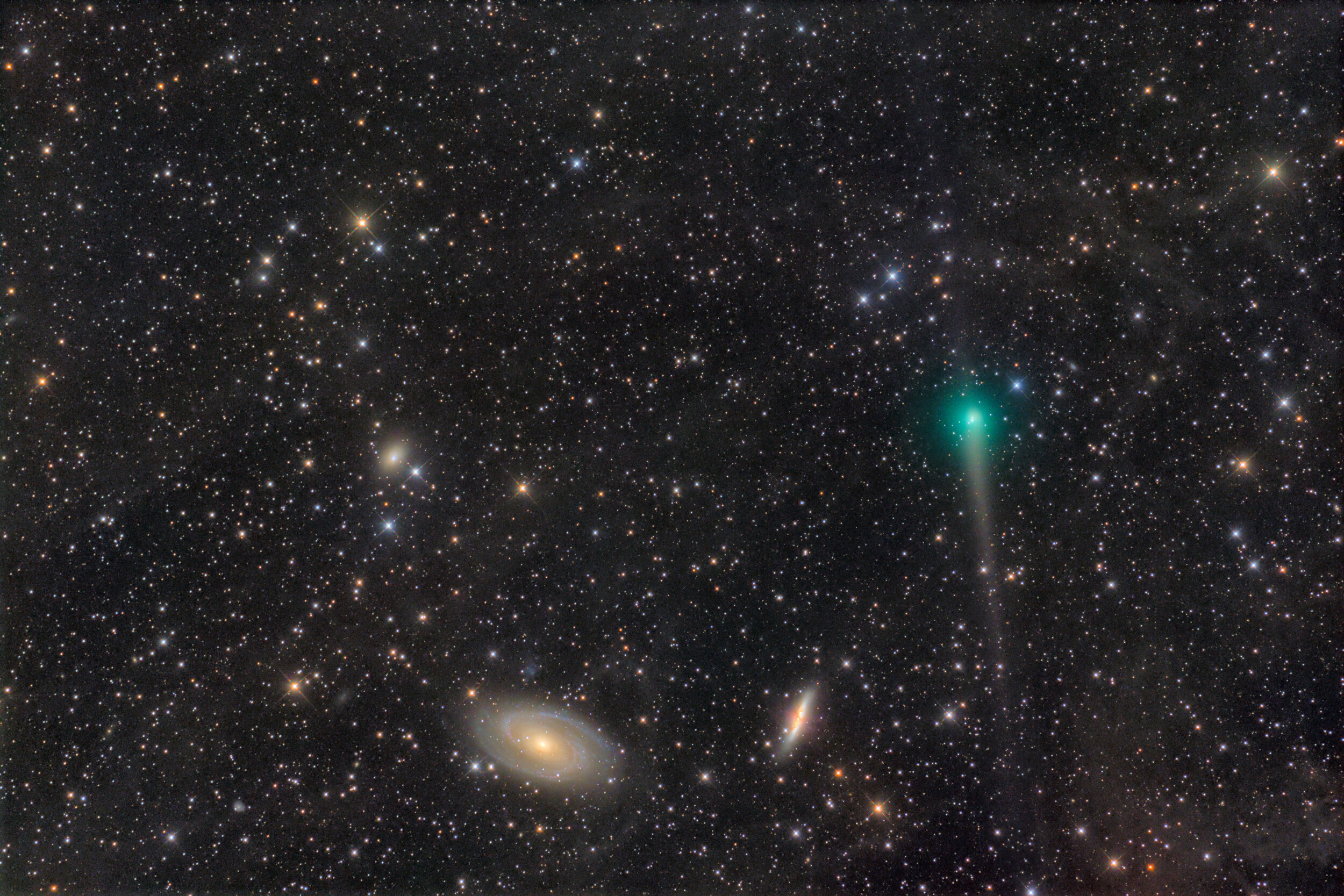
AAPOD2 Image Archives
M81
Featured Astrophotographer on AAPOD2
Messier 81 - Bode's galaxie in Ursa Major
M81, also known as Bode's Galaxy, is a striking spiral galaxy located in the constellation Ursa Major, approximately 11.8 million light-years away from Earth. It is one of the brightest galaxies visible in the night sky and is a prominent member of the M81 Group, a small galaxy group that includes several other galaxies.
What sets M81 apart is its remarkable appearance and structure. It features grand spiral arms filled with young, hot stars, interspersed with dark dust lanes and glowing regions of star formation. At its center lies a supermassive black hole with a mass equivalent to approximately 70 million times that of the Sun. M81 is also notable for its interaction with its smaller neighbor, M82, which has led to the distortion of M81's outer spiral arms.
Studying M81 provides astronomers with valuable insights into the processes of galaxy formation and evolution. Its proximity to Earth and its clear, detailed structure make it an ideal target for observational studies aimed at understanding the dynamics of spiral galaxies and the role of interactions and mergers in shaping their properties.
Comet, Galaxies, and IFN Nebula
Comet C/2017 T2 PanSTARRS, dragging two long and straight dust tails, passed by near the galaxies M81 and M82.
In this long-exposure photo, some nebulae can also be seen filling the entire field of view. They are Integrated Flux Nebula. Unlike ordinary nebulae illuminated by nearby stars, IFN is far away from the Galaxy disk and is illuminated by the stars in the entire galaxy.
Bode 's Galaxy M81
Messier 81 (also known as NGC 3031 or Bode's Galaxy) is a grand design spiral galaxy about 12 million light-years away, with a diameter of 90,000 light years, about half the size of the Milky Way, in the constellation Ursa Major. Due to its proximity to Earth, large size, and active galactic nucleus (which harbors a 70 million M☉[5] supermassive black hole), Messier 81 has been studied extensively by professional astronomers. The galaxy's large size and relatively high brightness also makes it a popular target for amateur astronomers.




